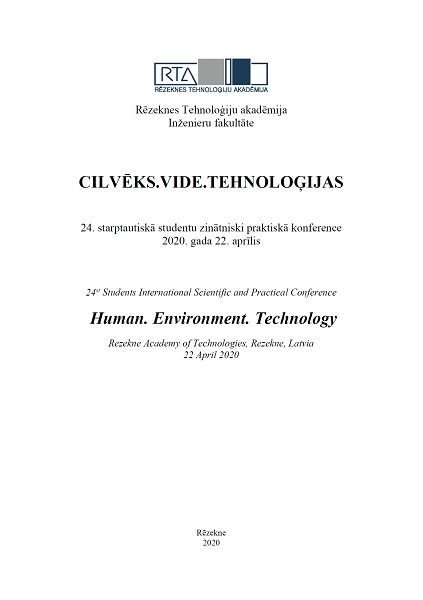RECYCLING OPPORTUNITIES FOR TEXTILE WASTE IN LATVIA
DOI:
https://doi.org/10.17770/het2020.24.6767Keywords:
, textile waste, recycling, re-use, waste-to-productAbstract
Textile industry is experiencing rapid growth due to changing consumer and fashion patterns. For example, in 2015, EU citizens bought about 12.66 kg of textile items per person. This generates a large amount of textile waste every year, making impact on environment and human health. Therefore, targets in European Union and national level are being set to reduce the amount of textile waste going to landfill. To achieve them, it is necessary to recycle textile waste into new products. The aim of the article is to research possible solutions for textile waste recycling, including the example of Estonia, as well as to create an engineering solution for textile waste recycling in Latvia to achieve goals of Directive (EU) 2018/851.Downloads
References
Different types of Fibers. [Online]. Available: https://sewguide.com/textile-fibers/. [18.03.2020.].
Textile waste. [Online]. Available: www.ecochicdesignaward.com. [18.03.2020].
Islam, S., Bhat, G. (2019). Environmentally-friendly thermal and acoustic insulation materials from recycled textiles. Journal of Environmental Management, 251.
Nikolina, S. (2019) Environmental impact of textile and clothes industry. Pages 10.
Brand "Reet Aus". [Online]. Available: https://www.reetaus.com/pages/brand-concept-mission. [01.04.2020].
Directive (EU) 2018/851 of the European Parliament and of the Council. [Online]. Available: https://eur-lex.europa.eu/legal-content/EN/TXT/?uri=celex:32018L0851 [13.04.2020.]
long-term strategy. [Online]. Available: https://ec.europa.eu/clima/policies/strategies/2050_en. [27.02.2020.].
The Paris Agreement. [Online]. Available: https://unfccc.int/process-and-meetings/the-paris-agreement/the-paris-agreement. [15.04.2020.].
Sandin, G., Peters, G.M.(2018). Environmental impact of textile reuse and recycling – A review.Journal of Cleaner Production, 184:353–365.
Briga-Sá, A., et al.(2013). Textile waste as an alternative thermal insulation building material solution.Construction and Building Materials, 38:155–160.
Trajković, D., Jordeva, S., Tomovska E., Zafirova, K. (2017). Polyester apparel cutting waste as insulation material. Journal of the Textile Institute, 108:1238–1245.
Nunes, L.J.R., Godina, R., Matias, C.O.J., Catalão, J.P.S. (2018). Economic and environmental benefits of using textile waste for the production of thermal energy.Journal of Cleaner Production, 171:1353–1360.
Toom Tekstiil AS. [Online]. Available: https://www.toomtekstiil.ee/en/about/. [02.04.2020].
Brand "Velga Code" [Online]. Available: https://www.la.lv/1182352-2. [16.04.2020.].
Brand "Zīle". [Online]. Available: http://laukutikls.lv/nozares/uznemejdarbiba/raksti/zali-domat-aicina-zimols-zile. [19.03.2020.].
Brand "Lude" [Online]. Available: http://www.lude.lv/?section=about. [19.03.2020.].
Regulation No.302 of Cabinet of Ministers (19.04.2011) on waste classification and properties that make waste hazardous. [Online]. Available: https://likumi.lv/ta/id/229148-noteikumi-par-atkritumu-klasifikatoru-un-ipasibam-kuras-padara-atkritumus-bistamus. [16.04.2020.].
Ltd. Eco Baltia Vide. [Online]. Available: https://www.ecobaltia.lv/files/lasua_eco_baltia-vide_final.pdf. [26.03.2020.].
-Waste database. [Online]. Available: http://parissrv.lvgmc.lv/#viewType=wasteReports&incrementCounter=1. [16.04.2020.]


